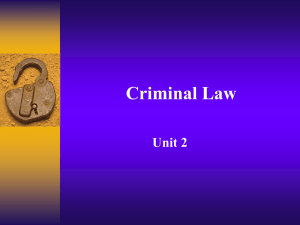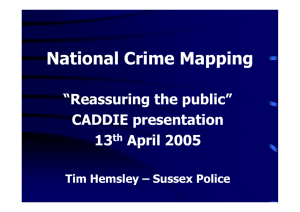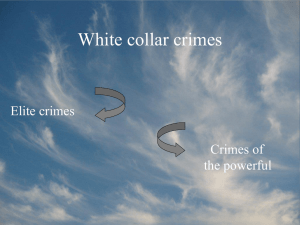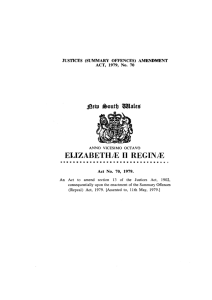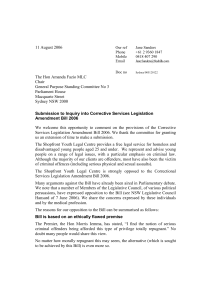Edwin Sutherland
advertisement
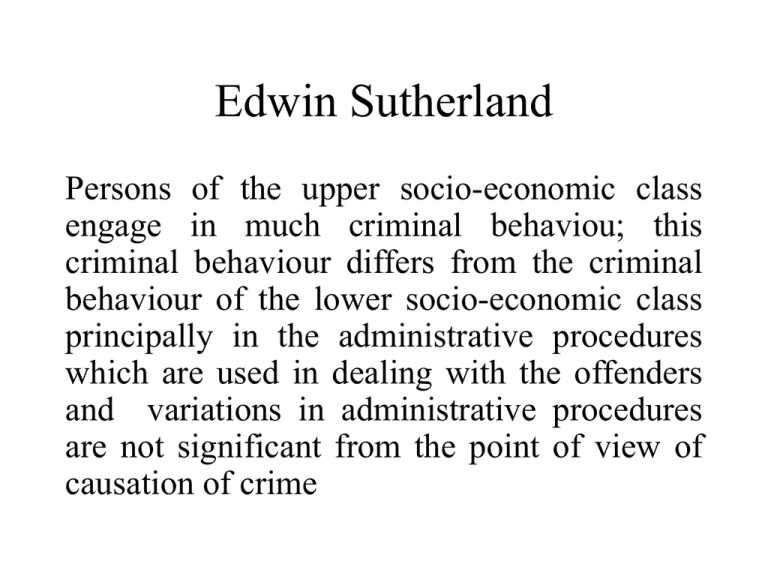
Edwin Sutherland Persons of the upper socio-economic class engage in much criminal behaviou; this criminal behaviour differs from the criminal behaviour of the lower socio-economic class principally in the administrative procedures which are used in dealing with the offenders and variations in administrative procedures are not significant from the point of view of causation of crime White collar crime Sutherland defined white collar crime as a crime committed by a person of respectability and high social status in the course of his occupation Slapper and Tombs comment in relation to corporate crime: In what is best understood as a selfperpetuating cycle of omission and ignorance, most standard texts on criminology pay little or no attention to it; most theoretical criminology does not attempt to explain it; most undergraduate courses in criminology or criminal justice marginalise it. The occupational nature of offences • They take place in the private sphere of the workplace so they are relatively invisible and can be concealed more easily because business offenders are legitimately present at the scene • They are committed during the course of an occupation, so they involve an abuse of the trust inherent in an occupational role • Offences are made possible by the use of some form of technical or insider knowledge, which may be an awareness of how to use organizational routine to conceal offending or may involve the abuse of professional, scientific or financial expertise Victimization Offences involve different patterns of victimization and many offences are characterized as victimless. Victims may not be aware of any harm, as in food adulteration or in safety offences Lack of intent In many offences there is an apparent lack of intent, particularly where a diffusion of responsibility is involved, and where, although a regulation may have been broken, the consequences of that violation, such as injury, were not intended Victims’lack of awareness and the invisibility and complexity of offences make them difficult to detect, and difficulties of attributing responsibility and obtaining evidence also make offences difficult to prosecute. This leads to a relatively low rate of detection and prosecution. In addition, many offenders receive what are seen as lenient sentences, which are also related to the absence of intent, lack of direct victimization and the ambivalent status of offences Varieties of white collar crimes Research has focused on specific groups of activities, often legally defined, such as fraud or safety, environmental or consumer offences. Some activities can be seen as largely motivated by financial gain, whereas others intentionally or otherwise cause physical harms. Thus some people distinguish financial white collar crimes from others. Some studies have focused on specific industries such as chemicals or pharmaceutical industry, or on particular occupational groups such as specific professions Many people now accept that a broad distinction can be drawn between offences primarily motivated by individual monetary gain and those that are more directly related to the survival or profitability of organizations Difference between occupational and organizational crime Occupational crime, a typical example of which is embezzlement, involves offenders, either individually or in groups, engaging in illegal or rulebreaking activities for personal gain at the expense of consumers, clients or employers. Organizational crime, on the other hand, a typical example of which is the neglect of safety regulations, does not involve personal gain, but may be seen as being ’for the good of the organization’ by enhancing profitability of efficiency.
